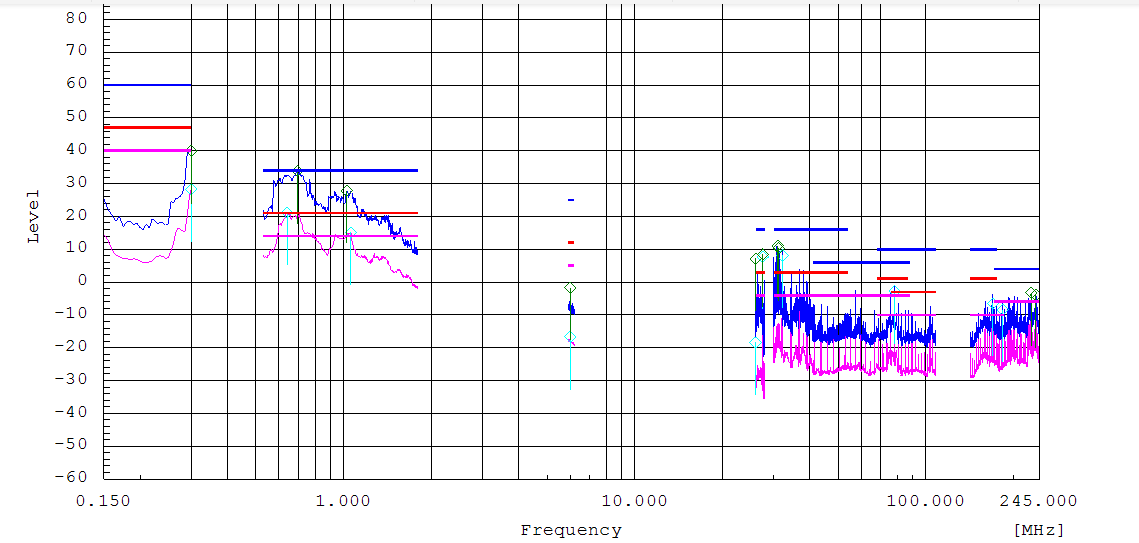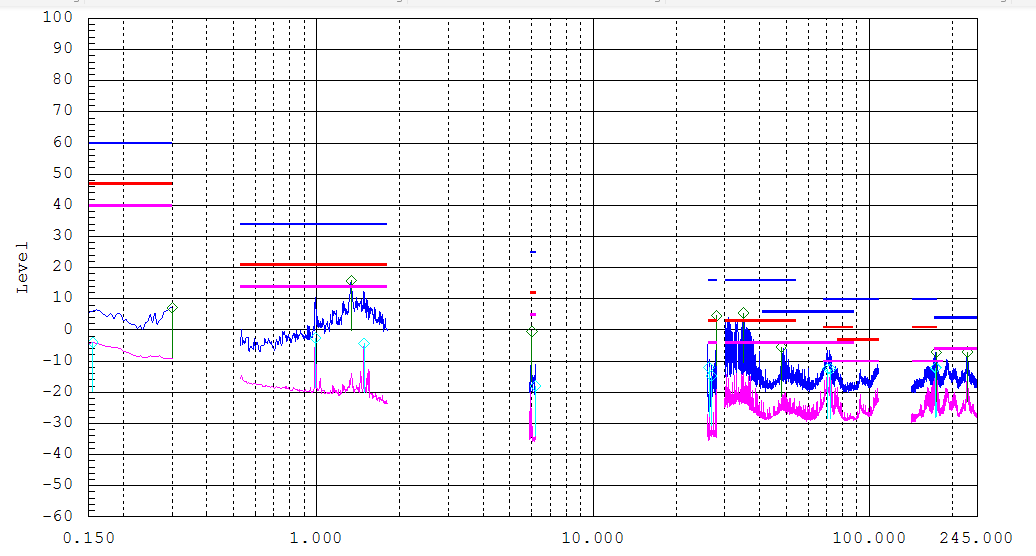Other Parts Discussed in Thread: LM26420
Hello
Our power systerm : Vin=5V,output:3.3V/500mA,1.2V/500mA. Part number:LM26420Q1XSQ/NOPB.
Test method : Conducted emissions from components/modules – current probe method ,lever 4
The PCB Layout and schematic reference to the datasheet.
The test resault
The number of 2.2M frequency exceeds level 4 standard。
Otherwise ,I use LM26420Y (550kHz)instead of LM26420X(2.2M).The resault is follower.
LM26420Y is better than LM26420X.
Question:
① Is LM26420Y Qualified With AECQ-100?
② What measures can be improved the EMC?



